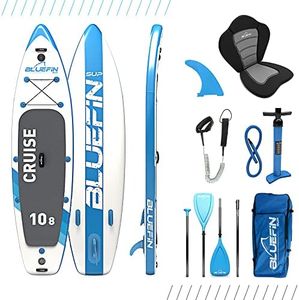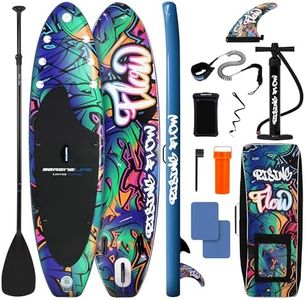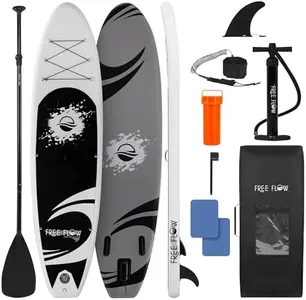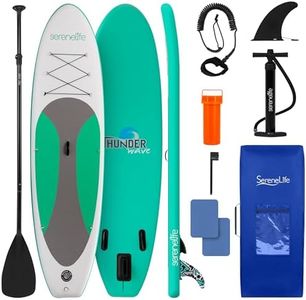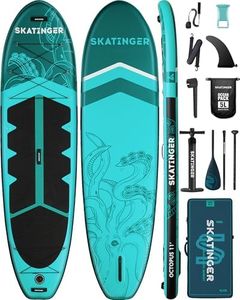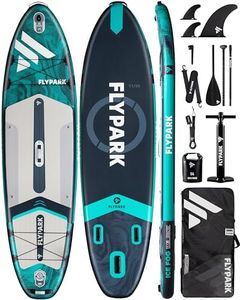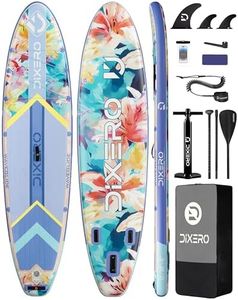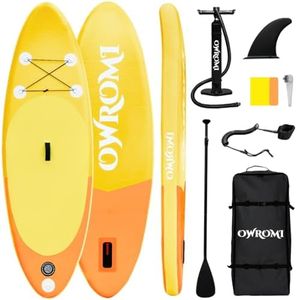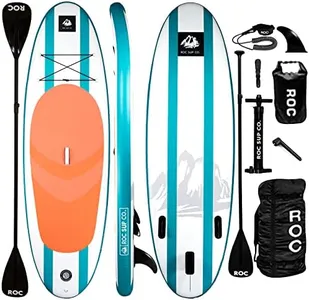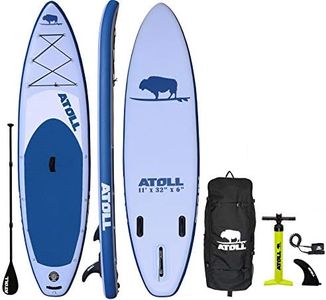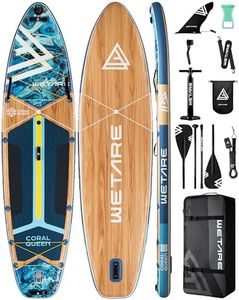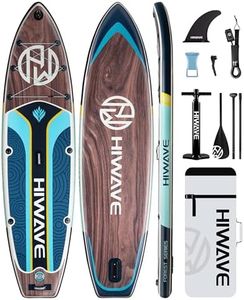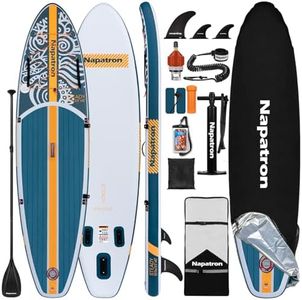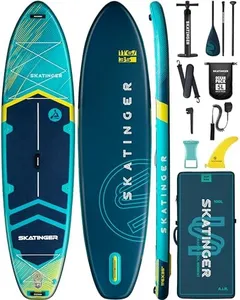We Use CookiesWe use cookies to enhance the security, performance,
functionality and for analytical and promotional activities. By continuing to browse this site you
are agreeing to our privacy policy
10 Best Stand Up Paddle Board Inflatable
From leading brands and best sellers available on the web.Buying Guide for the Best Stand Up Paddle Board Inflatable
Choosing the right inflatable stand-up paddle board (SUP) is all about matching your needs and skills with the board’s features. Consider where and how you plan to paddle—on calm lakes, gentle rivers, choppy coastal waters, or ocean surf. Your experience level and the activities you want to pursue, whether it’s relaxed cruising, yoga, touring, or catching small waves, will help guide your decision. Remember, a board's dimensions and construction will affect stability, speed, maneuverability, and ease of transport.LengthLength refers to how long the paddle board is from one end to the other. It directly affects how the board handles on the water. Shorter boards (under 10 feet) are easier to turn and maneuver, making them suitable for kids, beginners, and surfing small waves. Medium boards (10 to 11.5 feet) are great all-around options suitable for most adults and offer a nice balance between tracking and maneuverability. Longer boards (12 feet and up) are designed for touring, racing, and covering distance, as they glide better and travel faster. To pick the right length, think about what you want to do most with your board and your own height and weight; taller or heavier paddlers often feel more comfortable on longer boards.
WidthWidth is how wide the board is at its widest point. A wider board (typically 32 inches or more) provides greater stability, which is helpful for beginners, yoga, or paddling with children or pets. Boards in the 30-32 inch range offer a balance of stability and performance, good for general use. Narrower boards (under 30 inches) are faster and track better for experienced paddlers or racing, but can feel less stable. Consider your skill level, your activities, and your body size—wider if you’re just starting or prioritize stability, narrower if you want speed or already have good balance.
ThicknessThickness is measured from the bottom to the top surface of the board and typically ranges between 4 and 6 inches. Thicker boards (6 inches) offer more buoyancy, which helps keep heavier paddlers or extra gear above water and can make the board more rigid. Thinner boards (around 4 inches) are lighter and sit lower in the water, which can give a more stable feel for lighter paddlers, but may flex more if overloaded. Think about your weight and whether you plan to carry extra items—choose thicker for more support or thinner for lighter use.
Weight CapacityWeight capacity is the maximum combined weight the board can safely support, including you and any gear. It’s crucial for safe, stable paddling and also ensures the board performs as intended. Manufacturers usually list this in pounds or kilograms. To navigate this, add up your weight plus anything you might bring (such as kids, pets, or coolers). Choose a board with a weight capacity that’s at least equal to, but preferably higher than, your total load to maintain stability and prevent sagging.
Construction QualityConstruction quality refers to how the inflatable paddle board is built, usually involving layers of PVC, drop-stitch material, and reinforcement methods. Higher quality boards have multiple layers and reinforced rails, making them more durable, stiff, and less likely to puncture. Lower quality boards may use fewer layers and less sturdy materials, which can lead to flexing or leaks. Look for clear descriptions of the material and construction process. If you plan to paddle often, in rocky areas, or want your board to last longer, focus on boards described as multi-layered or reinforced.
Fin SetupThe fin setup on a paddle board affects how the board tracks (goes straight) and turns in the water. A single large fin is straightforward and ideal for flatwater paddling, offering good tracking. A three-fin or “thruster” setup adds two smaller side fins, improving maneuverability and stability, especially in choppier water or surf. Some boards offer removable fins, allowing you to adjust for different conditions. If you’ll be paddling mostly on calm water, a single fin works well. For versatility or more challenging waters, consider boards with multiple or customizable fins.
Portability and PackagePortability includes how easy the board is to carry or pack away when deflated, and what comes with the purchase. Most inflatable boards fit into a backpack-size bag, making transport and storage easier than hard boards. The package may include a pump, paddle, leash, repair kit, and bag. Consider your ability to carry the board when packed up, and whether the included pump and paddle are of good quality for your needs. Choose a complete package if you’re starting out, and prioritize lightweight packs if you plan to travel or hike with your board.

